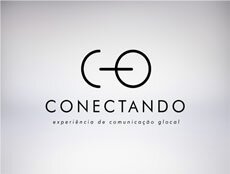Reality and fantasy drawn in oils and acrylic forms the work of Caio Locke, who spoke exclusively to the Brasil Observer at the opening night of his new exhibition in London
By Rômulo Seitenfus
Caio Locke is English, but with a foot in Brazil. Half English, half Brazilian, he mixes reality with fantasy in paintings that reveal wonderful cities surrounded by surreal events. A mysterious universe.
So says the artist himself, who gave an interview to Brasil Observer at the opening night of his new exhibition in London, Pillars of Wisdom, on display until January 2015 at Oaktree & Tiger Gallery.
Working mostly in acrylic and oil, Locke’s paintings instigate the imagination with a rare combination that falls between mathematical precision and abstract thinking. Colours and shapes also play a key role for the painter in his search for subjective expression of both the inner and the outer worlds. The result is comprehensive and opens the way for both spiritual and intellectual interpretation of his works.
From this inherent subjectivity to the artwork, the interview below seeks to understand the motivations and references of the artist, who is someone who can draw on the canvas what is happening in his thoughts. Nevertheless, it is worth seeing the paintings first hand so that the lines of his reasoning can be understood more fully.
“It’s a mysterious process, difficult to understand. It is not something concrete, it’s very abstract. There is a subjective world and an other, real world. There is a mix between philosophical and mathematical”
How would you describe your past between Rio and London?
My father’s family has lived in Brazil for over 100 years, and my mother is English. I spent lots of time in Brazil, and grew up visiting the Rio sights. I also have family in São Paulo, but Rio de Janeiro is the place of my strongest memories. The Rio topography is what I have most in my memory. I remember the smell of the city, the Leblon noise. At the time, there were chickens on the streets… We used to do activities on the high waves breaking on Copacabana beach. I always found much beauty between the sea and the hills. I remember the noise of the buses, the tunnels. I liked to assemble Lego… My favourite was a rocket, and then I painted a train going to another planet.
You speak of a combination of mathematical precision and abstract imagination as a philosophical line of your work…
It’s a mysterious process, difficult to understand. It is not something concrete, is very abstract. There is a subjective world and an other, real world. There is a mix between philosophical and mathematical, between the concrete and the subjective. It is a copy, but not real, of the meeting between the abstract colours, without identifying ways.
Your thoughts are exposed in your works, such as the idea that utopia serves as a mask for a false optimism…
Yes, because there is no possibility as human. I tried to understand the inner world and the perception of civilization in existence as a reflection of the outside world and where civilization is going to. My work is the result of this meeting. It is the aspiration of our dreams, it is optimism as utopia and reflection of all that.
Which artists have inspired you early in your career?
At school I loved Goya – very dark, but imaginative. I love Morandi, the Italian Futurism, and I admire Van Gogh Escher because he expresses the reality with sensitivity. Cosmic architects also inspire me, such as the Brazilians Lúcio Costa and Oscar Niemeyer.
Does the mystery you express come from any belief?
It is more oriented to the side of philosophy or spirituality. I am open to the world and all I see and feel, what happens around people. I don’t want to be specifically on one side or another. It is more than religion. It is another thing that has nothing to do with religion.
Your signature on the canvas is always hidden…
It’s a matter of priority and focus. I do not want to highlight my name because the image is more important. It is also a fun game.
When did you open your imagination to new artistic possibilities? Can you cite some specific period?
When I started attending East London… From a three-dimensional shape, I started to imagine new possibilities, reinforcing the surreal. That really opened my mind to think of painting, to be a designer of my thoughts.
Rio is a very prominent theme in many of your paintings. You show the real city, mixed with surreal images…
It is something above the everyday, something that mixes reality and the unreal. It is people’s lives and the setting in which they live, but all mixed up with something that is out of real power.
—




